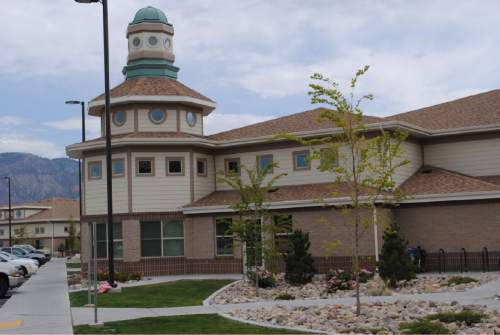This is an archived article that was published on sltrib.com in 2016, and information in the article may be outdated. It is provided only for personal research purposes and may not be reprinted.
Salt Lake City Mayor Jackie Biskupski and the City Council went toe to toe behind the scenes this week on the size and location of proposed homeless shelters.
On Tuesday and Wednesday, they went the rounds on what is looking more and more like a testy stalemate.
Biskupski, along with Salt Lake County Mayor Ben McAdams, has been pushing for two 250-bed shelters to be located at sites yet to be designated in the capital city. The plan is designed to reduce the chaos surrounding the crowded Road Home shelter on Rio Grande Street downtown.
Plans for new shelters are the outgrowth of 18 months of discussion that also yielded $9.4 million in state funding and the hope of two more grants of equivalent value for new facilities and allied programs.
But the council was, for the most part, left out of the city's commission on shelter-site selection. In response, it began to weigh in on the issue several months ago, balking at the plan because, council members contend, 250-bed shelters are too big and would overwhelm neighborhoods where they are placed.
Council Chairman James Rogers refused to convene a special closed session Tuesday requested by the mayor, who sought to share 10 to 12 potential sites with the council in hopes of including the body in the selection decision and deliberations to whittle the number down to five.
Rogers said the mayor's reluctance to discuss smaller shelters has been frustrating for the council. It's the latest bump in the road between Biskupski and the council in what has been a rugged ride since she took office in January.
"We tried for three months to get her to the table to discuss sizes less than 250 beds," Rogers said. "But nothing happened."
In addition, he said, it is the mayor's responsibility to select the sites.
Few neighborhoods would welcome a homeless shelter and many at City Hall expect a backlash from residents where shelters are proposed.
Wednesday, before a Department of Airports board meeting, harsh words were exchanged between Biskupski and Rogers when the chairman refused to discuss shelter size. "How are we going to discuss size in a two-minute discussion before the airport board meeting?" Rogers said.
Terse comments were exchanged, he added.
The atmosphere became charged earlier this month when the council identified changes in land-use regulations intended to minimize potential neighborhood impacts from proposed shelters. The council also asked Biskupski to identify five potential sites by Oct. 10 to provide time for public input.
Further, the body sought a written plan from the mayor by Nov. 1 that outlines how the administration will mitigate negative impacts on neighborhoods where new facilities are located.
"We tried everything we possibly could," Rogers said. "So we gave her a timeline."
The mayor's spokesman downplayed any irritation on her part, but said the council has long been aware of the proposal.
"In our view, the size conversation has been going on since January," said Biskupski spokesman Matthew Rojas, when advocates went to Capitol Hill seeking funding for new homeless shelters and additional services.
The 250-bed proposal came from visiting eight cities, he said, as well as conversations with homeless-services providers across the country.
A proposed funding total of $27 million is based on two 250-bed facilities to maximize goals for dollars spent, Rojas said. He added that legislative leaders expect the council to get on board.
Time is of the essence, administration officials say, because further funding may not be forthcoming if lawmakers don't see progress.
The council's next meeting is scheduled for Oct. 4.





